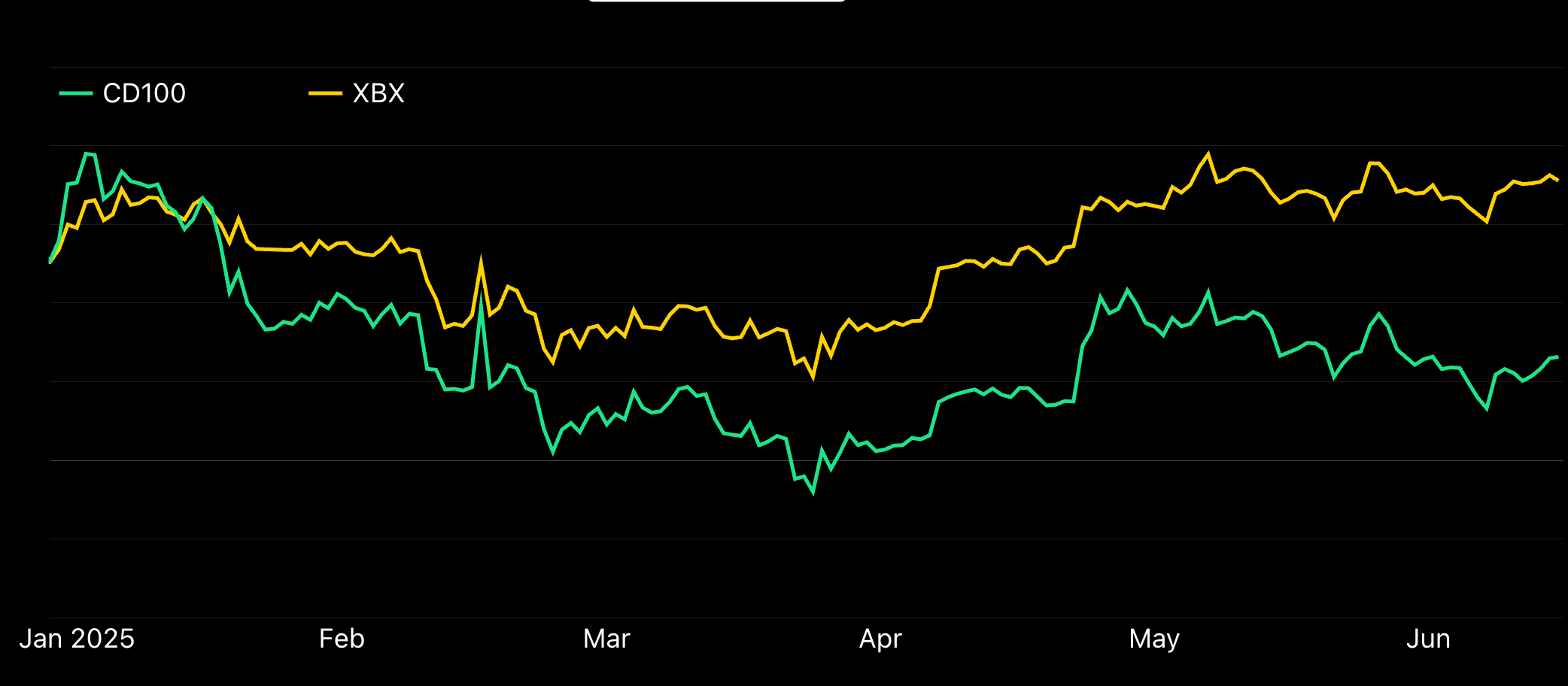Ether (ETH) 3.5% in the past 24 hours to $2,519 as of 18:59 UTC on June 30, according to CoinDesk Research's technical analysis model, supported by continued institutional demand, network upgrades, and major retail platform integrations.
Institutional interest remains robust, with CoinShares reporting $429 million in net inflows into ether investment products over the past week and nearly $2.9 billion year-to-date. This trend has coincided with a declining ETH supply on exchanges and rising staking levels, with over 35 million ETH —a round 28% of the total supply — now locked in proof-of-stake contracts. Market analysts suggest that these factors are reducing liquid supply and bolstering ether's long-term investment thesis.
Robinhood announced on Monday that it is developing its own Layer-2 blockchain using Arbitrum’s rollup infrastructure. The network is not yet live, but the initiative will eventually support Ethereum staking, tokenized stock trading, and perpetual crypto futures. Although the L2 is under development, the decision to build it on Ethereum’s rollup ecosystem is seen as a long-term vote of confidence in Ethereum’s scalability roadmap.
Ethereum co-founder Vitalik Buterin has also introduced a new digital identity framework using zero-knowledge proofs. This system allows users to verify traits or credentials without revealing private data and is designed to help Web3 apps incorporate privacy-preserving identity systems. Analysts view this as a key step toward wider adoption of decentralized applications requiring sensitive user authentication.
Meanwhile, the Ethereum Community Conference (EthCC) kicked off in Cannes, France, gathering more than 6,400 attendees and 500 speakers. The event showcases Ethereum’s ongoing developer momentum through presentations on new tools, scaling strategies, and protocol improvements.
Despite the positive momentum, ETH remains just below its 200-day moving average, suggesting technical barriers still exist. However, the confluence of inflows, developer progress, and scaling plans continues to support a constructive outlook.
Technical Analysis Highlights
- Ether traded between $2,438.50 and $2,523 from June 29 19:00 to June 30 18:00, marking a 3.47% range.
- The largest spike occurred during the 22:00–23:00 UTC window on June 29, when ETH surged 2.9% on volume of 368,292 ETH, briefly pushing through the $2,500 barrier.
- On June 30 at 15:00 UTC, ETH found strong support around $2,438 on above-average volume, confirming a bullish floor.
- A local high of $2,523 was reached earlier in the day, establishing resistance just above the psychological $2,500 level.
- During the final hour from 18:00 to 18:59 UTC on June 30, ETH retraced from an intraday peak of $2,499.19 to close at $2,487.19.
- A sharp upward move between 18:20–18:21 saw ETH climb 1.6% on 6,318 ETH volume, stalling near $2,499.
- As of 20:23 UTC on June 30, ETH traded at $2,519, up 3.49% in 24 hours, signaling renewed bullish momentum into the Asia open.
Disclaimer: Parts of this article were generated with the assistance from AI tools and reviewed by our editorial team to ensure accuracy and adherence to our standards. For more information, see CoinDesk's full AI Policy.

